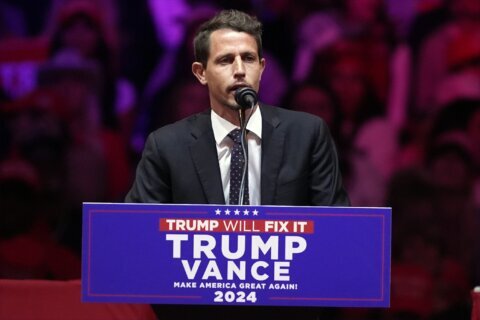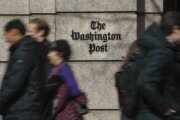When considering investing in bonds other than U.S. Treasurys, one crucial economic indicator to add to your watchlist is credit spreads.
A credit spread is the variance in yield between a U.S. Treasury bond and another type of bond of the same maturity, but different credit quality. This spread is an important indicator of how investors perceive the risk associated with corporate-issued bonds compared to the relative safety of Treasurys.
“The bond that you’re buying represents the creditworthiness of whomever you’re lending that money to,” says Michael Wagner, co-founder and chief operating officer at Omnia Family Wealth. “For example, the U.S. government would be very creditworthy and come with relatively low risk, but also low return.”
For instance, the ICE BofA US Corporate Index Option-Adjusted Spread measures investment-grade bonds, which are rated a minimum of “BBB” by one or more of the three major credit-rating agencies. On the other hand, the ICE BofA US High Yield Index Option-Adjusted Spread measures high-yield bonds, also known as non-investment-grade or “junk” bonds.
“A high-yield bond is a corporate bond with credit ratings below BBB from two out of three recognized credit-rating agencies such as Moody’s, S&P and Fitch,” says Evan Mann, senior high-yield analyst at Gimme Credit, an independent corporate bond research firm.
[Sign up for stock news with our Invested newsletter.]
The trade-off here is clear: High-yield bonds offer greater yields but come with a higher risk of default. That increased income compensates for the greater probability of seeing your money disappear entirely.
“A high-yield bond is like making a loan to a company that might have more risk — the risk that you’re not going to be paid back at all,” Wagner says.
Similar to stocks, you can reduce risk by pooling high-yield bonds from multiple issuers through a high-yield bond mutual fund or exchange-traded fund (ETF).
These funds offer added bonuses, including monthly distributions (as opposed to semiannual coupons), and provide transparency. Portfolio metrics to watch include the average credit quality, duration (a measure of interest rate sensitivity) and the 30-day SEC yield, a standardized measure of income.
“Given that high-yield bonds carry a much higher level of credit risk than investment-grade bonds, diversification is very important,” Mann says. “Investing through a mutual fund or ETF can provide that level of diversification.”
Here are seven of the best high-yield bond funds to buy now:
| Bond fund | Expense ratio | 30-day SEC yield |
| Schwab High Yield Bond ETF (SCYB) | 0.03% | 7.7% |
| Invesco Senior Loan ETF (BKLN) | 0.65% | 7.9% |
| iShares iBoxx $ High Yield Corporate Bond ETF (HYG) | 0.49% | 7.2% |
| SPDR Bloomberg High Yield Bond ETF (JNK) | 0.4% | 7.3% |
| Fidelity Capital & Income Fund (FAGIX) | 0.97% | 5.6% |
| Vanguard High-Yield Corporate Fund Investor Shares (VWEHX) | 0.22% | 6.3% |
| iShares Fallen Angels USD Bond ETF (FALN) | 0.25% | 6.9% |
Schwab High Yield Bond ETF (SCYB)
“I think retail investors should generally access high-yield bonds through a pooled investment vehicle like a mutual fund or ETF,” Wagner argues. “It’s very difficult for a regular retail investor to analyze the high-yield bond market, and you really have to do a lot of due diligence and credit-risk analysis on these companies as if you were a bank making a loan to them.” A low-cost ETF to consider here is SCYB.
With a 0.03% expense ratio, or $3 annually in fees for a $10,000 investment, SCYB is one of the cheapest high-yield bond ETFs on the market. It passively replicates the ICE BofA US Cash Pay High Yield Constrained Index, holding about 1,500 issues with an average duration of 3.3 years, implying relatively low interest rate sensitivity. Currently, this ETF pays a 7.7% 30-day SEC yield.
Invesco Senior Loan ETF (BKLN)
“When you think about a company’s capital structure, shareholders take the first losses, making that the riskiest position,” Wagner says. “High-yield bondholders could get equity-like returns, but if the company goes belly up, you actually have a claim against the liquidation value.” This protection is further enhanced if your bond fund holds senior loans. A great example of an ETF in this niche is BKLN.
The senior loans held by BLKN enjoy a privileged position in the company’s capital structure. This means they have priority for payouts if the company is liquidated and are often secured by collateral. Moreover, their floating-rate nature makes this ETF an excellent holding in a “higher for longer” interest rate environment. BKLN charges a 0.65% expense ratio and pays a 7.9% 30-day SEC yield.
iShares iBoxx $ High Yield Corporate Bond ETF (HYG)
Thanks to the unique creation and redemption-in-kind mechanism, most ETFs tend to be quite liquid. Even with low volume, an ETF can still be easy to trade if its underlying assets are liquid. Thus, investors looking to actively trade a high-yield bond ETF may want to find one that makes underlying liquidity a priority. The ETF to use here is HYG, which tracks the Markit iBoxx USD Liquid High Yield Index.
Thanks to its index methodology, HYG is one of the most liquid high-yield bond ETFs on the market. Currently, this ETF trades an average of 33 million shares over a 30-day period with a low median bid-ask spread of just 0.01%. If you want to sell covered calls on HYG to generate income, it’s also possible thanks to its options chain. The ETF charges a 0.49% expense ratio and pays a 7.2% 30-day SEC yield.
[SEE: 7 Best ETFs to Invest in Corporate Bonds]
SPDR Bloomberg High Yield Bond ETF (JNK)
HYG isn’t the only high-yield bond ETF out there that caters to traders. You can also buy JNK, which, as its ticker suggests, focuses on junk bonds. It achieves this exposure via the Bloomberg High Yield Very Liquid Index, which emphasizes issuers with greater liquidity. The index is rebalanced at the end of each month and is quite diversified with about 1,200 individual issues.
JNK is highly versatile. If you want to hold it for income, it pays a decent 7.3% 30-day SEC yield with monthly distributions and charges a reasonable 0.4% expense ratio, lower than HYG. But if you want to actively trade it, JNK also comes with a 0.01% 30-day median bid-ask spread and an options chain. This ETF is one of the more popular ones in the high-yield bond category, with about $8.5 billion in assets.
Fidelity Capital & Income Fund (FAGIX)
Not all high-yield bond funds replicate an index. Some, like FAGIX, are actively managed and can take an unconstrained approach to security selection and portfolio management. In the case of FAGIX, this means being able to invest in defaulted bonds, distressed securities and equities in an attempt to outperform its benchmark, the ICE BofA US High Yield/US High Yield Constrained Blend Index.
Historically, this strategy has worked, with FAGIX returning an annualized 6% total over the last 10 years compared to 4.2% for its benchmark. This has earned the fund a five-star Morningstar rating out of 594 funds in its peer category, an indication of superior risk-adjusted performance. The fund currently pays a 5.6% 30-day SEC yield, but investors should be aware of a high 0.97% expense ratio.
Vanguard High-Yield Corporate Fund Investor Shares (VWEHX)
Vanguard is known for its low fund fees, and this perk even extends to some of its actively managed funds. A great example is VWEHX, which charges just 0.22%, even lower than some of the earlier high-yield bond ETFs. This fund currently holds about 900 issues, 51.4% of which are rated “BB” and 31.1% rated “B,” giving it a predominantly non-investment-grade-rated portfolio.
Historically, VWEHX has delivered total returns rivaling some equity funds. Since its inception in December 1978, the fund has returned an annualized 7.8%. Now, it pays a decent 6.3% 30-day SEC yield. However, investors should be aware that this fund has a $3,000 minimum investment requirement, and that it is not a tax-efficient holding. Thus, VWEHX is best held inside a Roth IRA or similar account.
iShares Fallen Angels USD Bond ETF (FALN)
In the bond industry, “fallen angels” are the bonds of previously investment-grade-rated corporations that have since been downgraded. Common causes of this can include high debt-to-equity ratios, missed bond interest payments or even an accounting scandal. When a major rating agency downgrades a company from investment-grade to junk status, its bonds become fallen angels.
The opposite can also occur. If the issuer’s fundamentals improve and its ratings recover, a fallen angel bond can become investment-grade again, thus giving investors upside return potential. To track these special high-yield bonds, iShares offers FALN at a 0.25% expense ratio. This ETF tracks the Bloomberg US High Yield Fallen Angel 3% Capped Index and pays a 6.9% 30-day SEC yield.
More from U.S. News
7 Best Semiconductor ETFs to Buy in 2024
8 Top-Performing Fidelity Funds for Retirement
7 of the Best High-Yield Bond Funds to Buy Now originally appeared on usnews.com
Update 07/31/24: This story was previously published at an earlier date and has been updated with new information.







